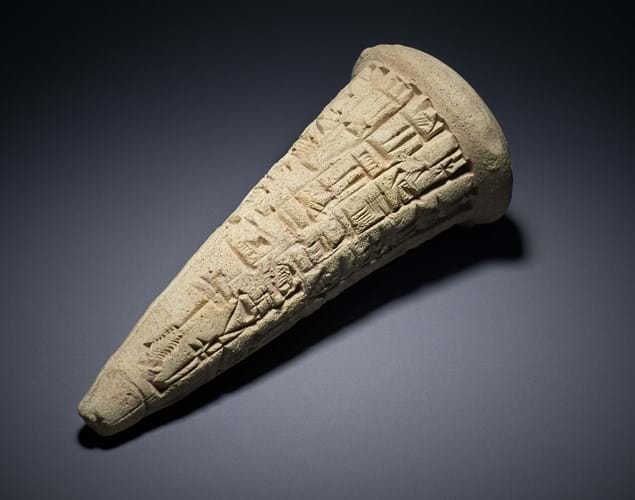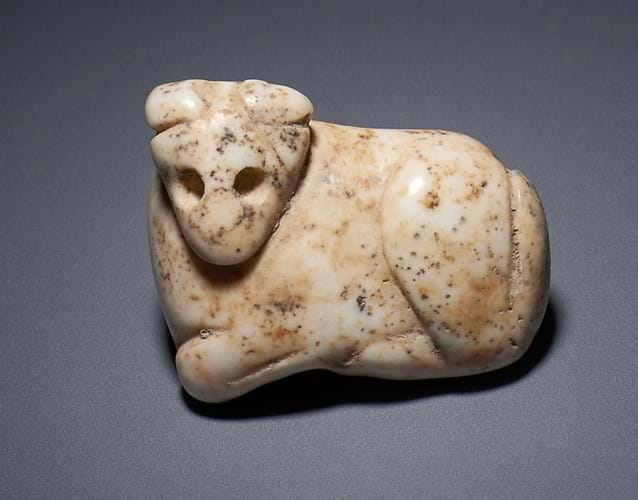
The assemblage of small objects – a marble bull pendant, a gypsum mace head, two stamp seals, an inscribed pebble and three clay cones bearing cuneiform script – has spent 15 years in the hands of the British state after the dealer (who has now ceased trading) failed to supply proof of ownership.
After years in police storage, the collection was taken to the British Museum for analysis earlier this year. The objects were quickly identified by as being from the site of ancient Girsu (modern Tello) in Southern Iraq, where the British Museum’s Iraq Emergency Heritage Management Training Scheme has been conducting archaeological excavations since 2016.
Inscriptions linked the cones with the Eninnu temple complex at Girsu with the other items identical to objects known from excavations at the same site.

A Jemdet Nasr period (c.3100–2900 BC) marble amulet carved as a bull, another of the eight Sumerian antiquities which have been returned to Iraq.
Dozens of shallow pits dug by looters at the site between 2003 and 2015 were identified as part of the BM’s Iraq scheme, it is believed these eight objects removed from the site in 2003 around the time of the fall of Saddam Hussein.
The museum says widespread looting of archaeological sites in southern Iraq took place between the 1990s and the period 2003-04 commenting that “analysis of the art market shows that similar inscribed cones were offered for sale during the same period.”
On August 10, the objects were formally handed over to the Iraqi Embassy in a small ceremony.





